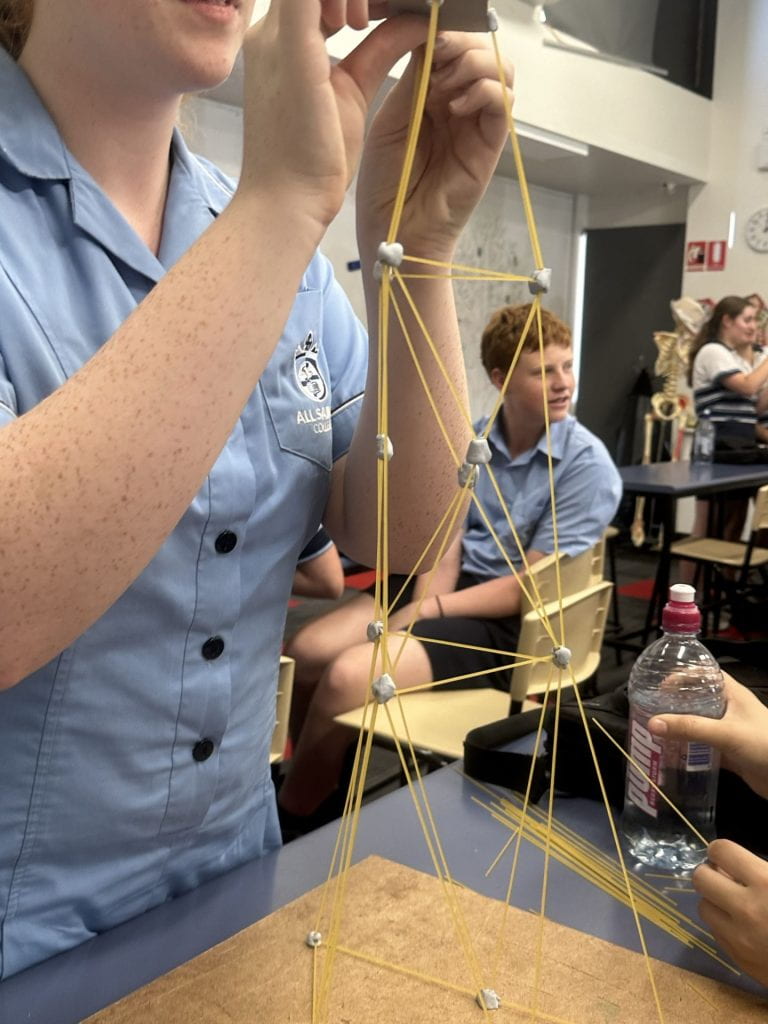Representation of the project

This engineering project is about designing and constructing a miniature model of a building using blue tack and spaghetti sticks and testing it to see if it could stay standing after vigorous shaking to simulate an earthquake. The purpose of this task was because many places across the world, including our neighbours New Zealand and Indonesia are located on fault lines that subject them to many earthquakes, these countries do not have many earthquake-resistant buildings so the damage after these events is phenomenal. Many countries are still rebuilding after earthquakes over a decade old. The model we created was required to be at least 60cm tall and have at least a width of 5cm by 5cm on the top of the tower additionally, we had a budget of $60 with each gram of blue tack costing $1 and each spaghetti stick costing $1. After the shaking test, we placed weights on the tower to see how much weight they could hold, because buildings in real life do not only have to support their weight but also the weight of many machines and people.
What is the problem?
For example, a strong trading partner of Australia, Japan is subject to many earthquakes and tsunamis. Because of these earthquakes, Japan has suffered many casualties and damage to infrastructure. Japan has adapted to this problem by using clever building techniques to reduce the damage sustained to the infrastructure and the population. In our design, we have incorporated designs that these earthquake-prone countries have used. Our group chose to use Cross braces, moment-resisting frames, a pendulum design, and a converging point.
Engineering process
First, before we began the construction or designing processes, we had to research the problem of the earthquakes happening in unprepared areas around the world and many casualties and damage being the result. We then used the criteria of the challenge to guide our research for what types of techniques could be used, for example, we could not reinforce any walls or floors, but we could add more spaghetti and blue tack to the base and sides of the structure. After we researched the techniques to use, we began to design our prototype, test it and then improve on it, until it hopefully could withstand the ‘simulated’ earthquake.
Improvements
If I were to do this again next time, I would like to do more research before constructing our prototype, so we would be better prepared to handle the challenge of shaking it our prototype could barely stand and as soon as they started shaking it it collapsed completely. Our base of the prototype was too weak to support the structure and the weight of the tower was not distributed correctly so it leaned too much to one side and then the top was too unstable, and it could not be supported by any amount of blue tack we could spare. I also think that we were rushed at the end of the first try and we ended up breaking more spaghetti and blue tack because we did not put enough effort into making practice designs to be more comfortable with building the tower, we would not have been so rushed and broke so much.
Collaboration
Collaboration between all of us did not start well because the other group members were sick or had things to do, but as things went on, we improved on many collaborative aspects. Because we each had assigned each other our roles and responsibilities, we each used our skills that benefited the project. Kate was the project manager and speaker, because of her leadership skills and she was good at making sure we all understood we were accountable for our roles and making sure we were all contributing as much as we should have. Ruby was the equipment manager because she was the most responsible out of our group and was always good at staying organised and keeping us all working when constructing the tower. I was the reporter because the group thought that I would be good at making sure each of the components of the task was done according to the assessment’s deadlines.
Overall our project was a great success.